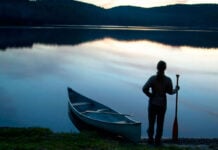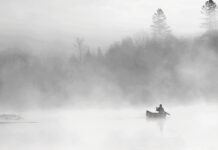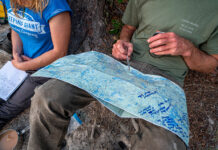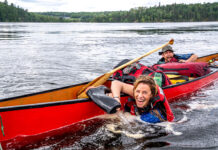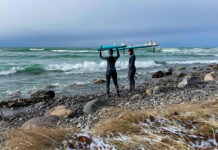The world’s very first trails are found in a cave on Mistaken Point in Newfoundland. In keeping with the sentiments of those who named the peninsula, they’re not what you expect.
More than 565 million years ago, a soft-bodied, jelly-like sea creature did something that had never been done before. It stretched. Then it scrunched. And in doing so, it moved itself just a few millimeters across the ocean floor.
To call the Ediacarans a kingdom of trailblazers wouldn’t be entirely correct, according to Robert Moor, author of On Trails. His book is as much love-letter to footpaths of the planet, as it is a meditation on the nature of existence. Traces might be a preferable term for the half-moon prints preserved in ancient ash on Mistaken Point. You and I would likely mistake them for scuffs.
Yet, these marks rocked the world of evolutionary biologists. The fossils represent the first time life began in one spot and struck out for another. Why did animal life move in the first place, Moor asks. What was it seeking?
It’s upon this unknowable, abstract nugget that my mind settled while huffing along the 2,350-meter Hell’s Canyon portage on the Missinaibi River. The double-carry gave me a combined total of seven kilometers to swat horse flies, and contemplate the origin of the tidy thread carving a path through the encroaching chaos of deadfall and scraggy pine.
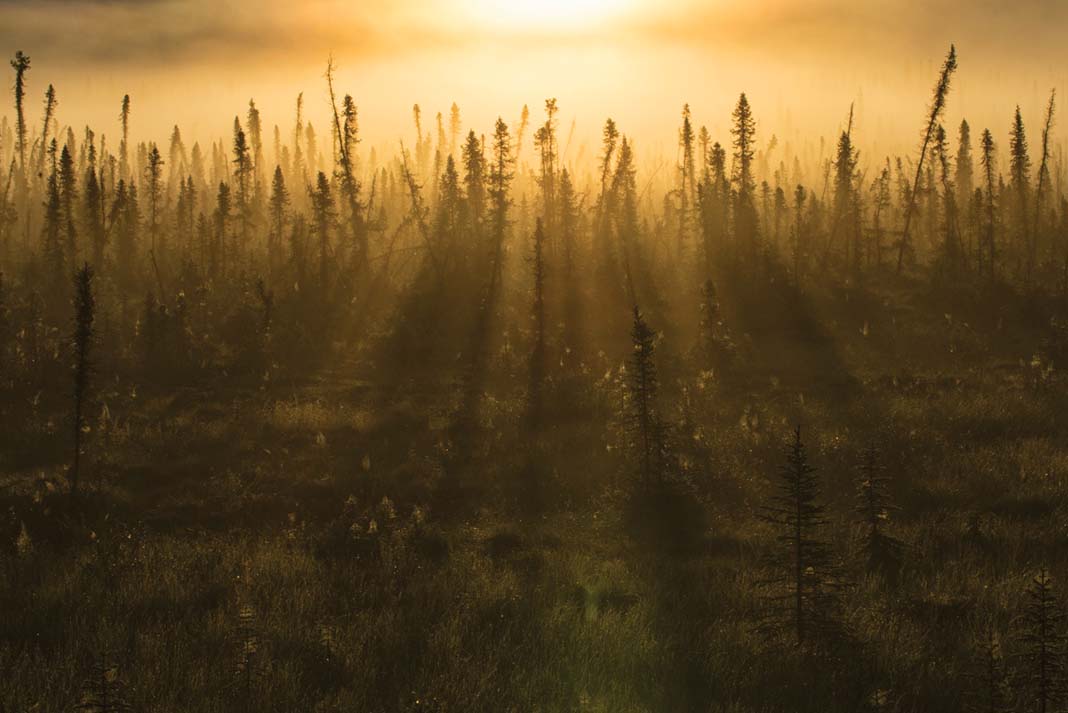
| PHOTO: PETER MATHE
This portage was sketched out first (as many as 2,000 years ago) by the James Bay Cree to connect the James Bay Basin to Lake Superior, 750 kilometers distance. When Europeans went north in the 18th and 19th centuries seeking furs, they followed the same paths of least resistance around the many falls and rapids. In the late summer of 2016, so did we.
For 11 days we followed by foot and paddle, tracing a thin blue line 300 kilometers north to Moosonee. More than 1,000 canoeists paddle the Missinaibi each year, but we saw only one other boat. In the isolation of our Old Town Appalachian we felt like we were one of the first explorers here—despite the orderly portages’ clear evidence to the contrary.
“We are inheritors of that line but also its pioneers,” writes Moor. “Every step we push forward into the unknown, following the path, and leaving a trail.”
That feeling of being both follower and explorer is a sentiment every wilderness canoeist can relate to.
Since Ediacarans first moved themselves all those millions of years ago, all manner of life on land has created trails. From the tiniest insects to the largest mammals, to humans, who have changed entire landscapes and ecosystems with our trail building. Whether made in the search for resources or safety, those trails guide us, offering a collective wisdom through the otherwise pathless woods. Yet, nothing new is explored by staying on trail.
The dense softwood forest and bog land squeezing the blue ribbon of the Missinaibi River on its journey north has the feel of a place primordial and unchanged.
That same evening I follow a game trail that leads away from our gravel bar campsite and into the forest. On the river, the path is clear, but here the trail soon disappears in a snarl of boughs and deadfall. I check the map, take a bearing on my compass and set off.
The trail points the way, but can only take us so far. Then, just like the Ediacarans, we explore on our own.
After five years at the helm, the Spring 2017 issue was Kaydi Pyette’s final issue with Canoeroots.

Subscribe to Paddling Magazine and get 25 years of digital magazine archives including our legacy titles: Rapid, Adventure Kayak and Canoeroots.



